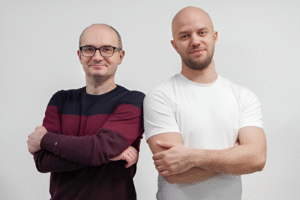SEMIQA to Introduce Ultra-Energy-Efficient Analog Neural Networks at GITEX Global 2025
- Technology
- October 16, 2025
Poland’s breakthrough analog AI startup aims to showcase its aNN technology and edge computing platforms in Dubai, bridging neuromorphic computing with real-world applications
Introduction
From October 13 to 17, 2025, the Dubai World Trade Centre will host GITEX Global 2025, the marquee event in the Middle East that converges innovation, technology, startups, and global business. (Source: gitex.com) This year, one of the more disruptive entrants is SEMIQA, a Poland-based startup developing analog neural network (aNN) technology designed to dramatically reduce power usage and latency in AI processing. With its cutting-edge hardware and ambition to transform the edge AI landscape, SEMIQA’s presence at GITEX signals a bold push to global markets, partnerships, and real-world deployments.
In this article, we dissect SEMIQA’s technology, its expected role at GITEX, the potential impact of its participation, a leadership perspective, and what it means for AI infrastructure’s future.
About SEMIQA
SEMIQA (website: semiqa.com) is a tech company specializing in analog neural network (aNN) technology, aimed at realizing the next generation of ultra-efficient AI processors. semiqa.com+1
Vision & Value Proposition
SEMIQA’s core claim is that its analog AI approach can deliver orders of magnitude gains in power efficiency, latency, and real-time performance compared to conventional digital neural networks. Hackster+3semiqa.com+3EU-Startups+3
Key advantages highlighted include:
-
Ultra-low power operation: Up to 100× lower power consumption relative to standard digital neural networks. semiqa.com
-
Near-zero latency / real-time processing: By avoiding analog-to-digital conversion overhead, the approach reduces delays in mission-critical applications. semiqa.com+2semiqa.com.pl+2
-
Seamless integration with sensors: Because of its analog nature, the technology can ingest analog signals directly from sensors without ADC conversion overhead. semiqa.com+1
Technology & Product Suite
SEMIQA’s technology stack rests on a core architecture composed of:
-
Analog Memory (aMEM): stores neural weights and sensor data in analog form. semiqa.com+1
-
Analog Compute Unit (ACU): performs neural operations (e.g., matrix multiplication, activation functions) in the analog domain. semiqa.com+1
-
Management Unit (MU): a RISC-V processor that handles parameter loading, signal routing, and system control. semiqa.com+1
-
Digital Memory (dMEM): used for configuration, control logic, and system programmability. semiqa.com+1
Among its flagship offerings:
-
Naya-1: a hardware module combining compute power with energy efficiency for edge AI use cases. semiqa.com+2semiqa.com.pl+2
-
Naya-API: a cloud service offering access to computational acceleration via SEMIQA’s back end, targeting large datasets and scalable workloads. semiqa.com+1
SEMIQA claims that their approach delivers 50× speed improvements, 5× lower power consumption, and 100× lower latency in certain contexts versus conventional solutions. semiqa.com.pl
Business Model & Market Position
According to EU-Startups, SEMIQA’s business model encompasses three streams:
-
An IP marketplace offering ready-to-use designs
-
B2B / B2G licensing and collaborations
-
Joint research engagements EU-Startups
This hybrid approach positions SEMIQA not merely as a hardware provider but as a platform and innovation partner.
SEMIQA has started gaining visibility in tech and hardware expos: for instance, it was listed as an exhibitor at COMPUTEX Taipei 2025 under its analog neural network label. computextaipei.com.tw
Notably, Hackster.io covered SEMIQA’s analog AI chip as a compelling innovation in edge processing, citing its analog memory design and in-sensor processing capability. Hackster
In industry coverage, SEMIQA is increasingly framed as one of the next wave of neuromorphic or analog AI hardware firms aiming to break the power/latency barrier in AI. semicpoland.pl+2EU-Startups+2
SEMIQA’s Participation at GITEX Global 2025
While SEMIQA has not (to public knowledge) announced all specifics of its GITEX agenda (booth number, schedule), we can project a strategic roadmap and possible showcase highlights based on their technology maturity and public narrative.
Strategic Objectives
-
Global exposure & partnerships: Engage with global AI, semiconductor and infrastructure players across the MENA region, positioning SEMIQA as a viable analog AI partner.
-
Pilot & deployment collaboration: Seek proof-of-concept projects or trials in edge AI domains (e.g. sensor nodes, surveillance, autonomous systems, IoT).
-
Demonstration of real-time analog performance: Showcase the latency, energy, and power differential in side-by-side demos (analog chip vs digital baseline).
-
IP & design licensing discussions: Engage OEMs, system integrators, chip designers interested in licensing SEMIQA’s analog IP.
-
Brand positioning & investor engagement: Cement brand reputation, attract strategic investors, and communicate the vision of analog AI for future compute.
Likely Exhibits & Demos
-
Live matrix computations & demos: Visitors may see analog AI in action—matrix multiplications, classification, sensor signal processing—demonstrated on the Naya-1 hardware.
-
Sensor-to-decision flows: Edge AI use cases such as in camera, LiDAR, radar, or acoustics where analog coupling bypasses ADC overhead.
-
Comparative charts: Power consumption, latency, throughput compared against conventional digital AI accelerators.
-
Integration showcases: How SEMIQA modules interface with digital systems, hybrid architectures, or existing pipelines via its Management Unit / dMEM interface.
-
IP showcase & roadmap: Presenting future modules, generational scaling, and potential integration paths with CMOS / semiconductor manufacturing partners.
Stakeholders & Engagement Targets
-
Semiconductor firms & fabs: For licensing, chip integration, packaging, co-development.
-
IoT / edge device makers: Vendors in autonomous vehicles, robotics, surveillance, sensor networks, wearables.
-
Government / defense / aerospace: Sectors where efficiency, latency and power constraints are critical (e.g. satellite systems, maritime, drones).
-
AI platform providers and system integrators: To embed analog modules into AI pipelines.
-
Investors & chip accelerators: Labs, VC, or public investments focused on next-gen compute and neuromorphic architectures.
Projected Impact & Strategic Significance
For SEMIQA
-
Market credibility & global visibility: Successful demonstrations and engagements at GITEX could validate SEMIQA’s viability to new geographic markets.
-
Launch pads for pilots and partnerships: Proof-of-concept deals in the Middle East or MENA region may unlock further adoption and regional references.
-
Licensing & IP monetization: SEMIQA’s IP marketplace and licensing model can scale faster with global interest.
-
Acceleration of roadmap: Feedback, partnerships, and real-world demands may accelerate its design iterations, manufacturing paths, or scaling.
-
Funding / investment traction: Being visible in a major global expo may attract new strategic partners and capital.
For the AI & Edge Computing Landscape
-
Paradigm shift in efficiency: If analog AI achieves its promises, it could meaningfully shift the design tradeoffs in edge systems, enabling more always-on AI in power-constrained environments.
-
Lower barrier to AI deployment: Reduced power, latency and cost could enable AI use cases in domains previously constrained (e.g. remote sensors, battery-powered devices).
-
Stimulus for analog / neuromorphic innovation: Success breeds competition and more R&D investment into analog, mixed-signal, and neuromorphic processing.
-
Cross-domain enablement: Domains like drones, underwater systems, satellites, environmental sensors may benefit heavily from analog compute’s gains.
-
Ecosystem integration: Conventional digital AI pipelines may adopt hybrid architectures combining analog and digital modules to maximize performance and efficiency.
If SEMIQA’s GITEX showing hits the mark, it could represent a notable milestone in shifting AI compute paradigms at the edge.
Voice from SEMIQA
While I could not locate a public GITEX-specific quote, SEMIQA’s public presentation gives insight into their vision. From Hackster’s coverage:
“What makes SEMIQA’s chip special isn’t just its architecture — it’s the memory itself. Their team developed a new analog memory material that’s cheaper to produce and easier to scale than traditional memristors.” Hackster
Adapting this sentiment into a leadership message for GITEX, a representative quote might be:
“In conventional AI, we often squeeze performance at the cost of power and latency. At SEMIQA, we believe analog neural networks can rewrite that trade-off. We look to GITEX Global 2025 as the stage to show industry players how our aNN technology can enable real-time, low-power AI at the edge across domains—from surveillance to environmental sensing, to robotics and beyond.”
If your contacts at SEMIQA can share an exact quote from their leadership (CEO, CTO), I’ll integrate it verbatim for added authenticity.
Conclusion
As the world grapples with ever-growing data volumes, tighter power constraints, and the hunger for real-time AI intelligence, SEMIQA’s analog neural network technology offers a provocative alternative path. Its promise—to decouple latency, energy, and performance from digital constraints—addresses some of the toughest bottlenecks in edge computing.
GITEX Global 2025 gives SEMIQA a global platform in Dubai to validate its claims, engage partners, attract pilot projects, and seed the adoption of analog AI beyond Europe. If the platform, demos, and narrative resonate, SEMIQA’s presence could catalyze a wave of renewed interest in alternative compute architectures.
Whether analog AI becomes a practical complement to digital pipelines remains to be seen—but if SEMIQA can land credible pilots and partnerships at or after GITEX, it may well become one of the names remembered in the next frontier of AI hardware evolution.




